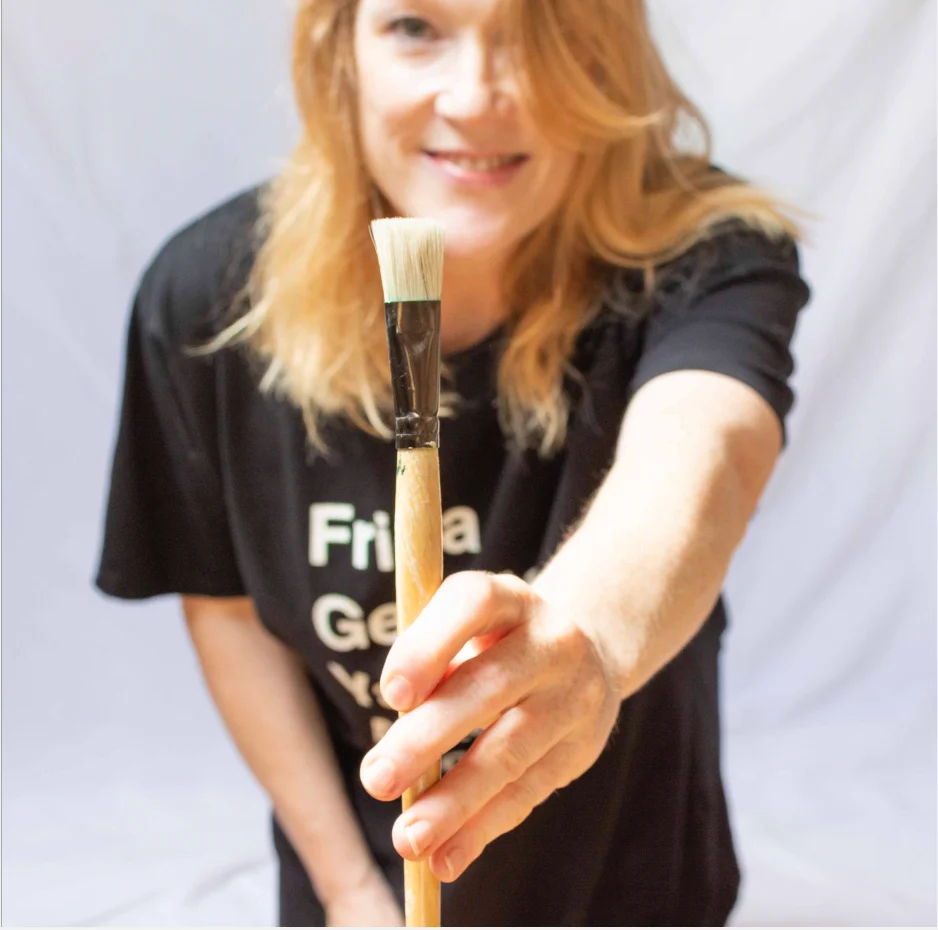An Exploration of Creativity – Henrie Richer asks: “What Makes an Artist?”

Being creative, or being ‘a creative’, has become in the 21st century a reason for pride, with some people feeling superior because they are creative and those who deem themselves not to be creative, feeling less worthy. Social media is flooded with the accounts of creatives and their tutorials, which they sell for reasonable fees to crowds of people.
And why are these tutorials and courses so popular and so numerous?
In fact, all humans are creative. It is part of our set of survival skills. We are all capable of “making or imagining something new, a new solution to a problem, a new method or device, or a new object”. It is how our species adapts.
Creativity is manifested in a myriad of ways, whether creating a meal from leftovers, decorating your home, gardening, adapting to a new job, organising your work-life balance. We all create every day.
And then there is artistic creativity, creating something in two dimensions or three dimensions, which is considered to be Art. For me, that means imagining and then creating drawings, paintings, sculptures, and etchings.
All my life I have imagined stories and pictures without necessarily making them real by writing them down or drawing. Knowing that what I was physically capable of creating would always turn out to be inferior to the image that I had conjured in my mind.
Expectations and creative family pressures
My mother and older sister both have fine art degrees and despite my ardent desire to follow in their footsteps, I had as a teenager a huge chip on my shoulder.
I thought that I was not an Artist. Having failed the entrance exam to art school at the age of seventeen, I dropped any artistic activity for 30 years and channeled my creativity into my language studies, writing freelance journalism and fiction, caring for my family, and homemaking.
But the deep-set desire and need to bring to life the images in my head never left me and I am now attending art school as a mature student at the age of fifty-nine.
I am not a proficient draughts woman; in that I cannot make realistic drawings of objects or people. For me, drawing was not a pleasure. It is laborious and painstaking if I try to be accurate, but I believed until eight months ago that being able to draw properly was a prerequisite to being a competent artist.
Art school in Versailles: being challenged
When I started art school in Versailles, in September 2022, I was confused when several teachers told us that academic technique, whether in drawing or painting, was of no interest whatsoever.
In our first painting lesson of the year, I was preparing a painting of three women. I’d sourced photographs and then traced the outlines of the figures onto tracing paper. I was preparing to transfer the outline of these figures onto a canvas when our painting tutor came by and said:
What on earth are you doing?”
I explained.
But why do you not just draw directly onto your canvas?” she asked.
I explained that I could not draw well and that if I drew freehand the proportions would not be correct.
Who cares about technique? It isn’t important. The only thing of importance in art is emotion. If your figures are not in proportion, but drawn free hand, your painting will be truly yours and have more impact, show more emotion,” she replied.
I had no idea what she was talking about and the first few months of art school were an exhausting and disturbing challenge. However, as I became more familiar with contemporary work I began to understand my tutor’s point of view.
Thanks to my impassioned art history tutor, I have grown to appreciate the legacy of past artists and how contemporary artists develop their own work from the inspiration that past work provides.
Not giving in to the inner critic
Although it is still an effort for me to ignore my inner critic, I can now let go of many of my expectations across my different disciplines.
I particularly enjoy blind contour drawing (not looking at the page while you draw) and drawing with my non-dominant hand. Some people have a natural talent for accurate drawing and I am a little bit envious of them, but I’ve learned to let go of perfectionism and I now rather enjoy my chaotic sketching.
What makes an Artist?
We are all born with different creative skills that need work and practice to develop.
Concerning art, one person may be able to draw from an early age, another may be able to shape materials into things, and another may have an innate knowledge of colour for example. Some may have a whole basket full of skills.
But to my mind the only common trait that all artists share is the need, the visceral need, to express ideas or feelings by creating an image or object.
When life prevents us from fulfilling this need we become sad, sometimes sick, and feel out of place. Like an athlete that needs to train, an artist needs to make their art and I am living proof that it is never too late to fulfill your dreams.
If you’d like to comment on Henri’s experiences, or yours, and her question of What makes an artist? then please do so below.
All images at copyright: Henrie Richer
You can find out more about Henrie on her website: www.henriericher.com
Editor’s Note:
Henrie Richer has been a member of MyFrenchLife.org Community since the very early days. She has written articles and has attended member events: Intimate Events & Indulgences with us in Paris. You can find early articles contributed by Henrie.









